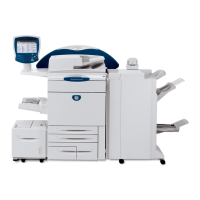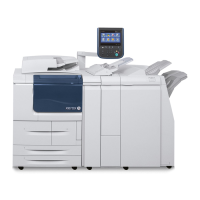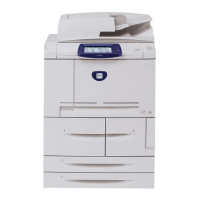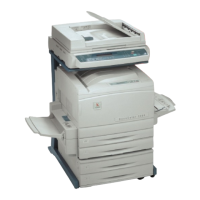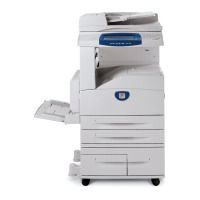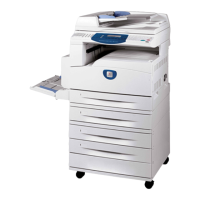How To Use This Manual
i
Always begin
v6
'
the service call procedures,
Section
1.
Perform initial actions to identify
and classify the problem.
Then proceed to one of the following sections
of
tho manunl
to
corroct
tho
problom,
Section
2
contains the status indicator RAPs.
Use these RAPS if the copier
is
not operational,
such as when
a
status code
is
displayed or
there
is
an improper indication, or
"1192"
display, etc.
Section
3
is
used to troubleshoot image quality
problems. If you are not sure of the type of
image quality problem that
is
occurring, use
the contents page
in
Section
3
to find a defect
that best represents the type of defect that
is
on the copy.
When using Section
2
or Section
3,
you may be
directed to Section
4
to perform repair or
adjustment procedures or to Section
5,
Parts
List.
Next, go to Section
1
and perform the normal
call procedures. Next determine if extended
maintenance procedures must be performed.
The Extended Maintenance procedures
depend on the number of feet of the copies
that hove been made since the last service
activity was performed.
After performing normal call or extended
maintenance, perform final actions to ensure
that the copier meets the copy specifications,
Multlnatlonal Conflguratlons
Dlff erences.
This manual contains information that applies to
US0
(USA), and XCL (Canada) 251012515
60Hz and XLA 2510 50160
HZ,
2515 60Hz.
US0 references usually apply to XCL.
If
US0
and XCL are different, the specific US0 or XCL
information will be shown by itself.
"Dry Ink" means the same as "Toner" and
"Tag" means the
same as "Mod".
Repair Analysis Procedures (RAPs)
A
RAP
is
a
sorioe of otops dooignod to loud
you
to the cause of a problem. In sach step, you
will
perform an action or observe an
occurronce. At each step,
a
staterrlent is mado
that has a Yes (Y) or No (N) answer.
If
the answer is NO, perform the action
following tho NO.
If
tho onswor is
YES,
proceed to the next step.
When several items are listed, perform them in
the order listed.
Proceed through the steps only until the
problem is solved. There is no need to
continue with the
RAP
after the problem is
corrected.
Repair
1
Adjustment Procedures
The repair procedures provide detailed steps on
how to remove and replace components. The
adjustment procodures provide dotailod stops
on how to check and adjust components.
Sotno copiors havo boon rnodifiod by various
design changes. Each change or modification
is labeled with a TaglMOD (modification)
numbor. Tho TugIMOD riurrlbors are identified
in the Change TagIMOD Index in Soction
6
of
It
11s Servico Munuul.
When a modification affects how a particular
procedure is performed, the procedure or steps
are identified with either a
WI TagIMOD or a
WIO TagIMOD statement.
Each procedure or step that is affected by a
modification is identified with the statement, WI
TagIMOD followed by the modification number.
The W/ in the statement indicates that this step
must be performed on copiers that are
assembled with that specific modification.
When the procedure or steps are not affected
by a particular modification, they are identified
with the statement,
WIO TagIMOD followed by
the modification number. The
WIO in the
statement indicates that this step must be
performed on copiers that are assembled
without Ihtrt specific rrrodiflcetion.
Noto:
Rofor to tho Change TaglMOD lndox
for information on how to determine
whether or not a copier has a particular
TaglMOD
numbor.
FOR EXAMPLE:
THERMISTOR (RT 1) REPAIR PROCEDURE
WARNING
1. Switch off the copier and disconnect the
power cord.
Wl
TagIMOD 5: Remove the xerographic
module.
In the step
1,
the WI TagIMOD 5 statement
refers to the modification number
5.
If
the
copier that is beinn serviced doas hnva
TagIMOD 5, perform this step.
If
tho copior doos not havo TagIMOD number
5,
ignore the WI TagIMOD 5 instruction. In this
situation, do not removo tho xerographic
modulo.
2. Lower the transport latchirlg cover.
3.
Lower the front cover.
In the steps
2
and
3,
no reference is made to
either the with or without TagIMOD
5
modification. Therefore, perform the
instructions whether the copier has or does not
have TagIMOD 5.
7/92
Introduction
viii
251012515
